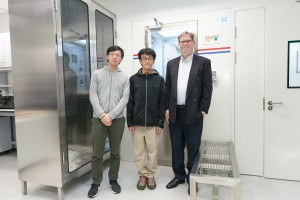
The Hong Kong University of Science and Technology (HKUST) will build a new kind of camera, using a new approach of quantum optics to detect previously undetectable signals from billions of light years away. The camera is set to help solve unanswered questions in astrophysics and cosmology, such as how light originates and varies around the black hole, in the hope of deciphering information emitted from there.
As one of the projects of the new Quantum Optics for Astrophysics and Cosmology Laboratory led by Nobel Prize laureate and HKUST’s IAS TT & WF Chao Foundation Professor George Smoot, the fast detector camera, once completed, will be put into use on an automated telescope at Assy Turgen Observatory, the national weather forecaster of Kazakhstan located at 2750 meters above sea level at the Assy-Turgen plateau. Smoot has also invited researchers from Nazarbayev University, the University of California, Berkeley as well as the University of Paris to participate in the project. Once tested and operated, the camera will be moved to a site in Canary Islands which covers more sky with clearer and darker nights for the substantive research.
Smoot said he hoped the laboratory could help further enhance Hong Kong’s capabilities in the area of astrophysics and cosmology, “Quantum optics appears to have the potential of providing another information channel about the universe, fundamentally different from imaging and spectroscopy. The impact of this camera that we are now building lies not only in the areas of cosmology and astrophysics but also on material research and quantum communication.”
Conventional telescopes allow us to observe cosmological phenomena but could not reveal micro movements and intrinsic characteristics of photons, which are fundamental to the illustration and interpretation of cosmological events. Therefore, A silicon photomultiplier (SiPM), a quantum optics technology that previously applied only in particle physics, is now used in the field of astronomy.
By incorporating the SiPM technology, HKUST will build the first fast detector camera in Greater China to measure and analyze weak photon signals such as its arriving direction, time, wavelength and polarization. With high spatial and temporal resolution, the camera does not only allow us to detect transient cosmological events, such as fast radio bursts, surface convection on white dwarfs and millisecond pulsars, whose origins are still not known despite their discoveries over a decade ago, but may also help us in probing the environment of the universe in different eras.
Having joined HKUST in 2016, Smoot is an expert in observational astrophysics and cosmology. He was awarded the Nobel Prize in Physics in 2006 jointly with Professor John Mather for their work that led to the discovery of the black body form and anisotropy of the cosmic microwave background radiation.































 Back to News
Back to News

























